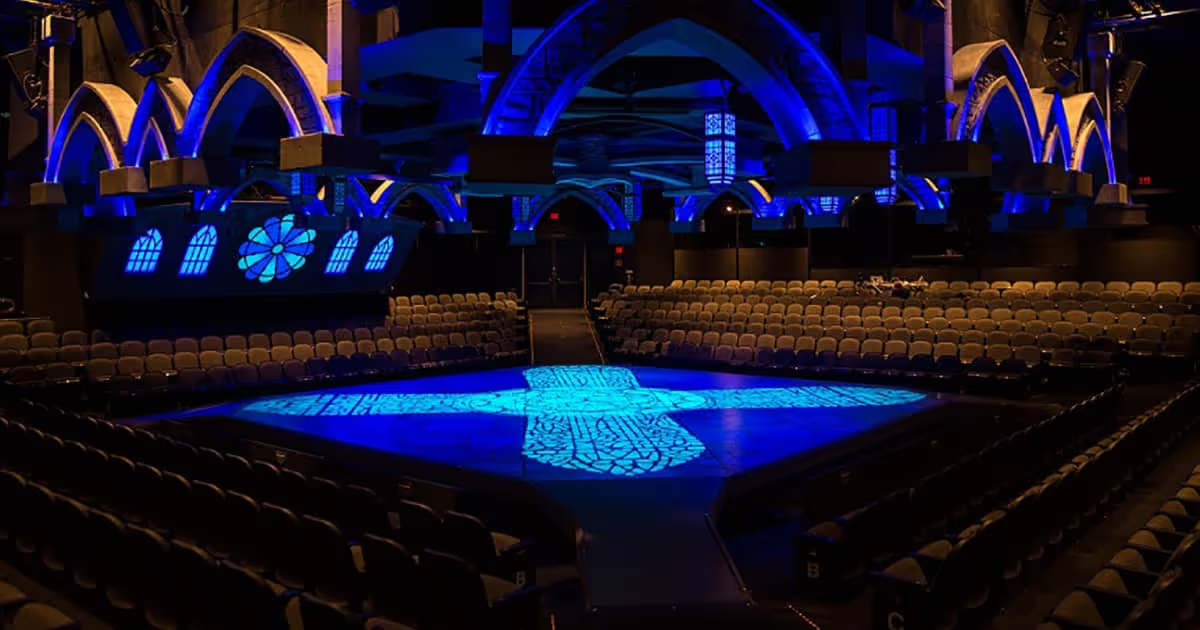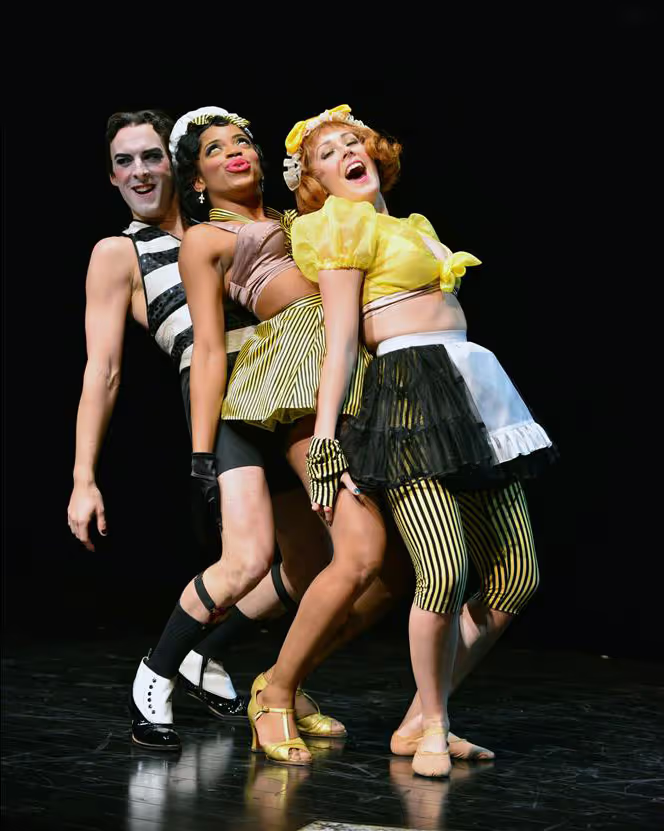Cabaret
Come to the “Cabaret” at the Marriott Theatre. The theater’s inspired artistic brain trust of director David H. Bell and choreographer Matt Raftery have combined with a spot-on cast to make something fresh and illuminating out of this 1966 warhorse.
The Marriott revival is not a revisionist production. The musical still recreates the manic spirit of Berlin on the brink of the Nazi revolution. The madcap Sally Bowles still seduces the struggling American novelist Clifford Bradshaw and the Kit Kat Klub still offers unlimited sleaze with the decadent Emcee as our garish host. But it’s the manner rather than the matter that makes this version so illuminating and entertaining.
We can start with the Emcee, a role nailed at Marriott by Stephen Schellhardt. The Emcee is one of the great showcase parts in American musical theater, a flamboyant figure that tends to lapse into much scenery chewing. Schellhardt’s Emcee effectively weaves in and out of the action, shading his presence from wink wink nudge nudge prurience to a cautionary glimpse of the abyss yawning at the feet of German society. Schellhardt doesn’t simply play the Emcee as a grotesque. He’s a thinking and feeling character holding a mirror up to the dissipation and moral corruption engulfing Berlin society at the start of the 1930’s.
Megan Sikora resists the temptation to do a star turn on Sally Bowles and gives us what the character really is, a promiscuous, second rate cabaret singer with her eye on the main chance, a woman with some charm struggling to survive in her hard knocks life. The lovestruck Bradshaw is well rid of her by the end of the show.
A subplot involves Herr Schultz, a gentle Jewish greengrocer, and his senior citizen lady friend Frau Schneider. The pair is usually played as an endearing and humorous couple, finding companionship and senior citizen love before the Nazism intolerance drives them apart. Annabel Armour gives Schneider a strength of personality (and a very serviceable singing voice) that elevates her from a semi cartoon into the embodiment of what the average German faced in the rise of Nazism. As her beau, Craig Spidle nicely etches a man who cannot and will not believe that he and millions like him are about to be marginalized by the Nazi anti-Semites.
David Bell shrewdly uses the Marriott’s limited in-the-round performing space, liberating the Kit Kat singers and dancers from their tawdry club into the wider world of Berlin where they serve as a metaphor for the catastrophe just over the horizon. The club denizens become a window to the moral breakdown that is afflicting all of Berlin, and Germany beyond.
There is one stirring scene in which a group of German men gather around a radio to listen to a Nazi speech. They then sing “Tomorrow Belongs to Me,” a beautiful and melodic song that delights the ear until the listeners recognize that they are hearing a Nazi party anthem. All the music at Marriott takes on a fresh dramatic thrust. The John Kander/Fred Ebb score is cut loose from its Broadway moorings and given an edgy Kurt Weill-Jacques Brel interpretation. The jagged sound insidiously emphasizes the menace that informs the show’s ambience.
Matt Raftery’s choreography drives home the vulgarity and cheap eroticism of the cabaret, complemented by Nancy Missimi’s blatant costumes that set the visual tone for the coarseness of the time. Like the Emcee, the dancers are integrated into the storyline, further underscoring the cabaret as a metaphor for the diseased society it served.
Even the prostitute Fraulein Kost rises from a comic character into a three dimensional woman, a hooker out of necessity who willingly joins the rising Nazi tide. Christine Sherrill converts a sniggering throw away character into a meaningful persona in the “Cabaret” world.
Bernie Yvon is fine as Max, the ingratiating Nazi who befriends Bradshaw but shows his true colors when the writer rebels against Max’s Nazi poison. Jameson Cooper likewise is very good as the nasty club owner who has an emotional hold on Sally Bowles. Clifford Bradshaw is the least interesting of the main characters, but Patrick Sarb does well in the few scenes where he is allowed to play something more than a naïve visiting American out of his depth in the crass world of Sally Bowles and the Kit Kat Klub.
Thomas M. Ryan’s minimalist set design frees the production from the restriction of a detailed cabaret set, enabling the director to keep the action fluid and giving the choreographer plenty of space to occupy the entire stage into the aisles. The club serves as much as a state of mind as a specific location where voyeurs can gather to snicker and smirk.
The remaining production credit go to Diane Ferry Williams (lighting), Robert E. Gilmartin (sound design), and Patti Garwood, musical supervisor, with Ryan Nelson the music director. Props to the musicians for their incisive handling of the prickly score.
We don’t lack for revivals of “Cabaret” in area theaters. It seems like we get another production every few months and I entered the Marriott anticipating we would get more of the same, neglecting to recall how brilliantly the theater had restaged “Cats” and “Miss Saigon” and other Broadway megahits. Lightning has struck again. This rethinking of “Cabaret” is the best staging of the show I have ever seen, both musically and dramatically. Risks were taken and they all worked. Some viewers may be uncomfortable with the Nazi element in the show, but the Marriott doesn’t shirk from limning vivid portraits of a few people snared in the obscenity and brutality of the time when civilization began to unravel.











